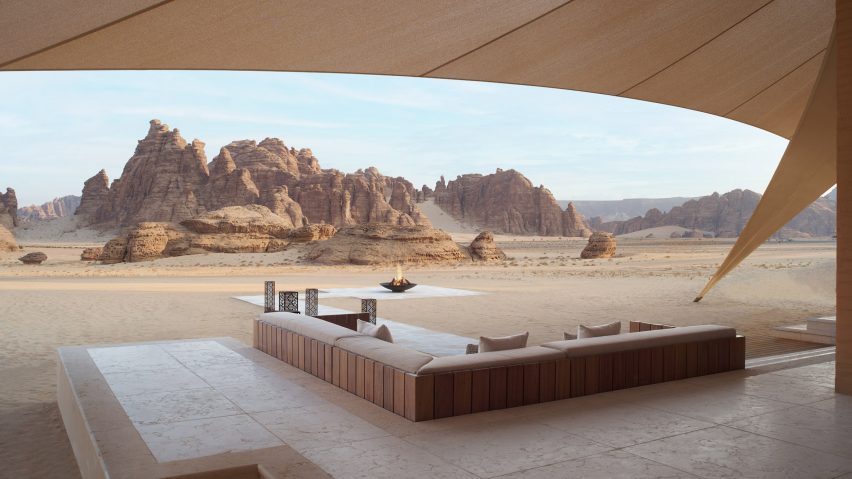
AW2 references Bedouin tents for resort in Saudi Arabia's AlUla desert
French studio AW2 has completed the Banyan Tree AlUla Resort in Saudi Arabia's Ashar Valley, with tent-like suites that have roofs made of sand-coloured canvas.
Across a dramatic, open site in the AlUla desert, the resort comprises 47 luxury tented suites, two restaurants and a spa with a pool, all arranged around the surrounding rock formations.
The suites reference the tents of the nomadic Bedouin people who historically occupied the area, and are designed by AW2 to balance the views of the vast landscape with more intimate pockets of shelter and privacy for guests.

"Our architecture responds to the fragility of the Ashar site and aims not only to restore but also to protect it from future harm by consciously addressing the balance of man and nature," said AW2, the studio led by architects Reda Amalou and Stéphanie Ledoux.
"Our concept involves harnessing the natural beauty of the landscape with a project that seamlessly integrates into the site, a design that is adapted and adaptable to the cultural, historical and natural specificities of Ashar."
Plans for the Banyan Tree AlUla Resort were first revealed in 2020. It forms part of the Royal Commission of AlUla's project to transform the historic desert area – home to Saudi Arabia's first UNESCO World Heritage Site – into an international tourist destination.
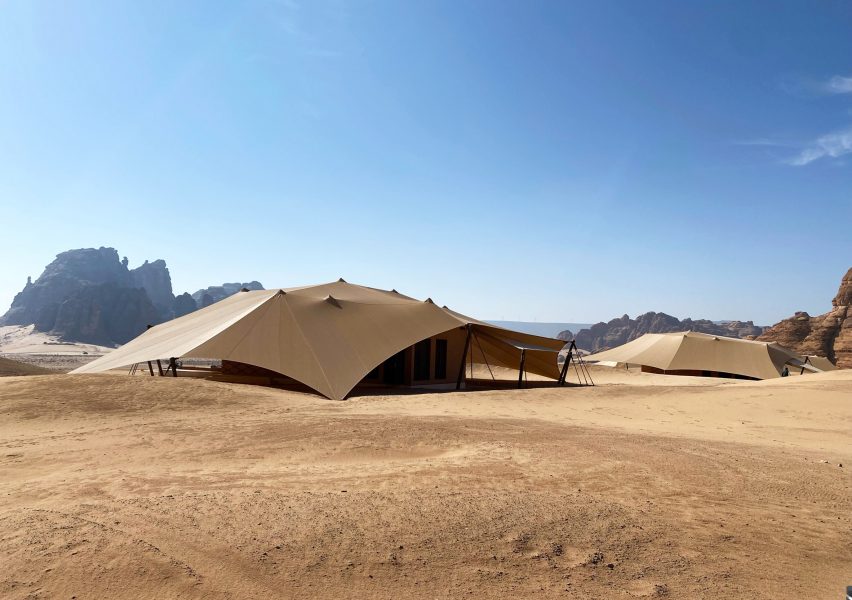
The suites, which range in size from one to three bedrooms, are all built from compressed earth bricks. They are topped by large tensile roofs that stretch outwards, supported by wooden posts, to shade and provide privacy for guests.
Openable wooden screens with a geometric pattern drawn from motifs used by the Nabataeans – one of several nomadic Bedouin tribes – provide natural ventilation and access to paved terraces with seating areas, small pools and firepits.
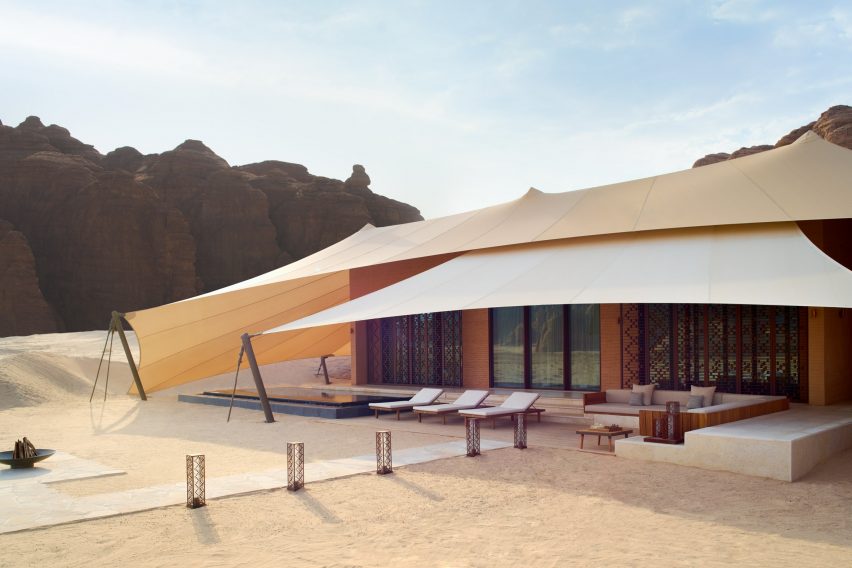
"Spaces are designed to create an indoor-outdoor feel, to help guests feel connected to nature," said AW2. "Terraces extend from the interior spaces with the canvas tent covering above."
Banyan Tree AlUla Resort is connected by a series of narrow desert trails, with the restaurants and spa nestled between existing rock formations and also built using compressed earth bricks.
"To emphasise the light touch approach in the development of the vast site, paths and walkways were designed as trails in the sand," added the studio.
"Guests travel through a landscape of sand dunes allowing them to get closer to nature. In this way, the footprint of the resort is reduced to a minimum and the site's natural habitat is preserved," it continued.
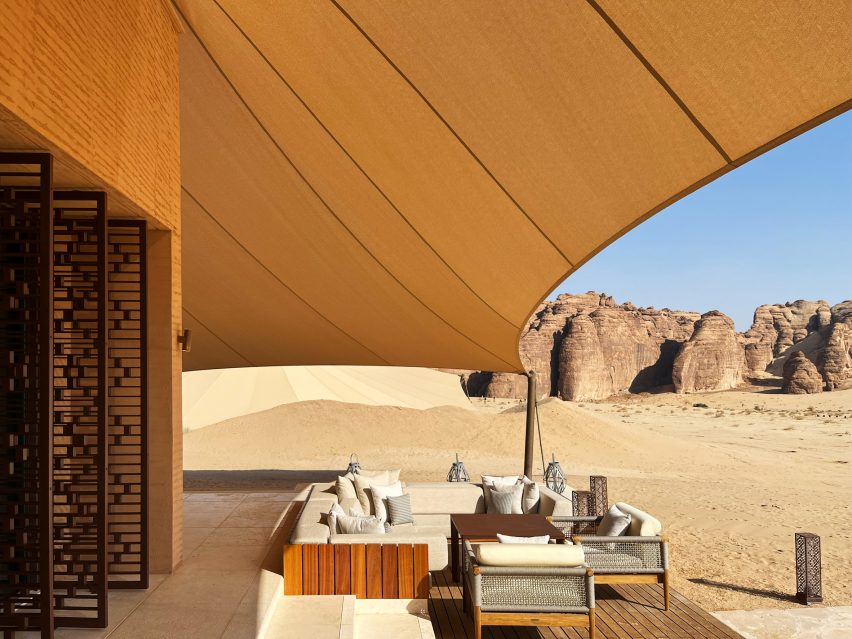
For the resort's interiors, a sandy-brown colour palette drawn from the roofs and the surrounding desert is used.
Bespoke dark wood furniture and fittings are combined with more decorative patterns that also reference traditional motifs of the Nabataeans.
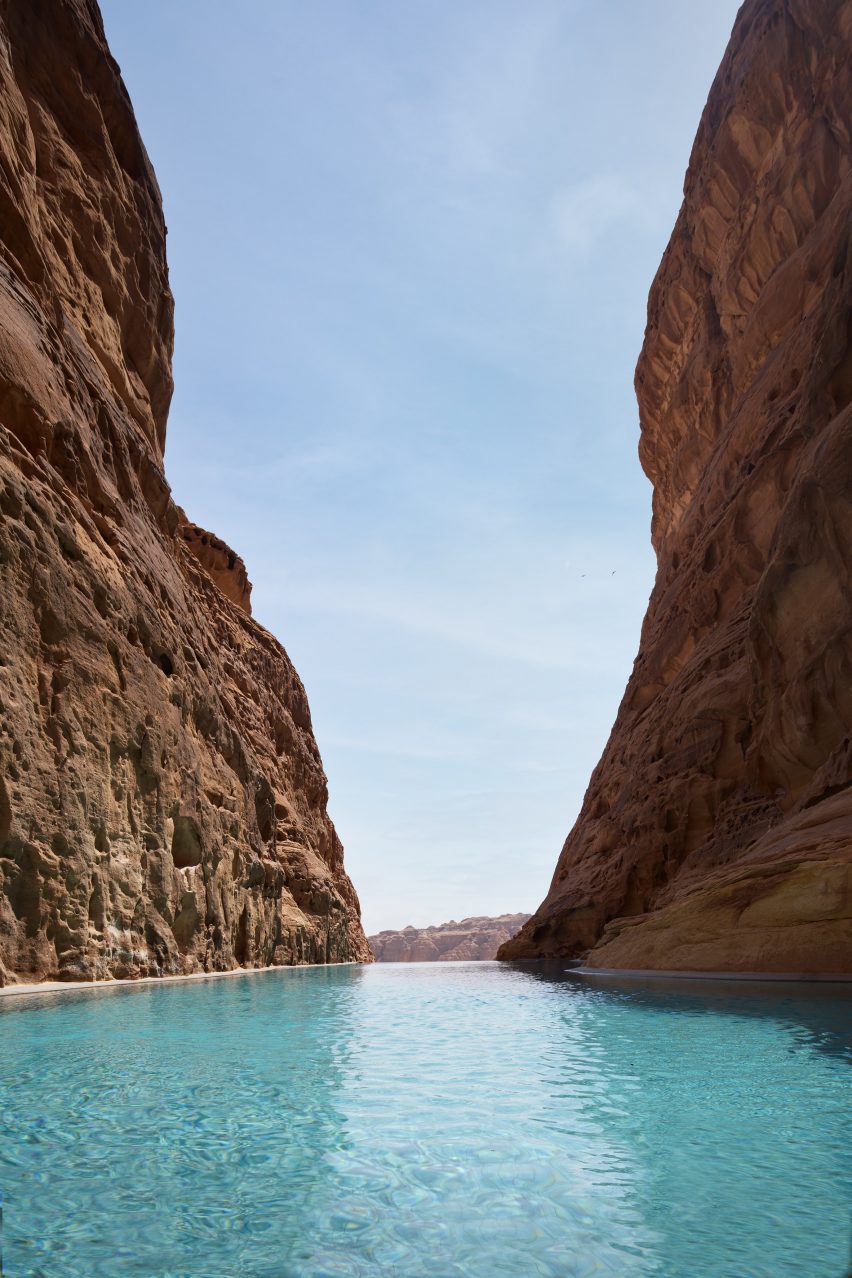
Saudi Arabia's extensive tourism push has recently seen Foster + Partners reveal designs for "the world's first fully immersive experiential marine life centre" in the Amaala resort, as well as a series of hotels and villas on the island of Shurayrah.
The country also recently unveiled the latest plans for its Neom development, which include designs to hold the Asian Winter Games in the desert and The Line, a 170-kilometre-long mirrored skyscraper that will be home to nine million people which has been criticised for its claims about sustainability and livability.
The photography is by Banyan Tree AlUla Resort unless stated otherwise.